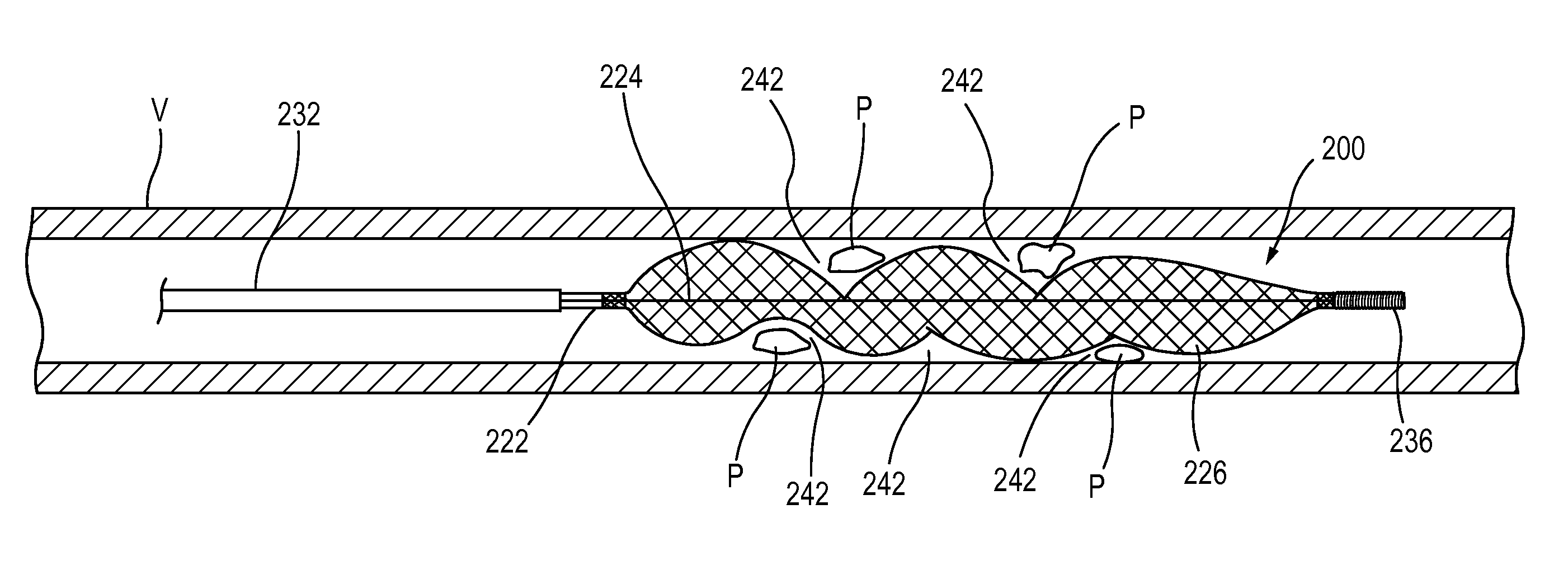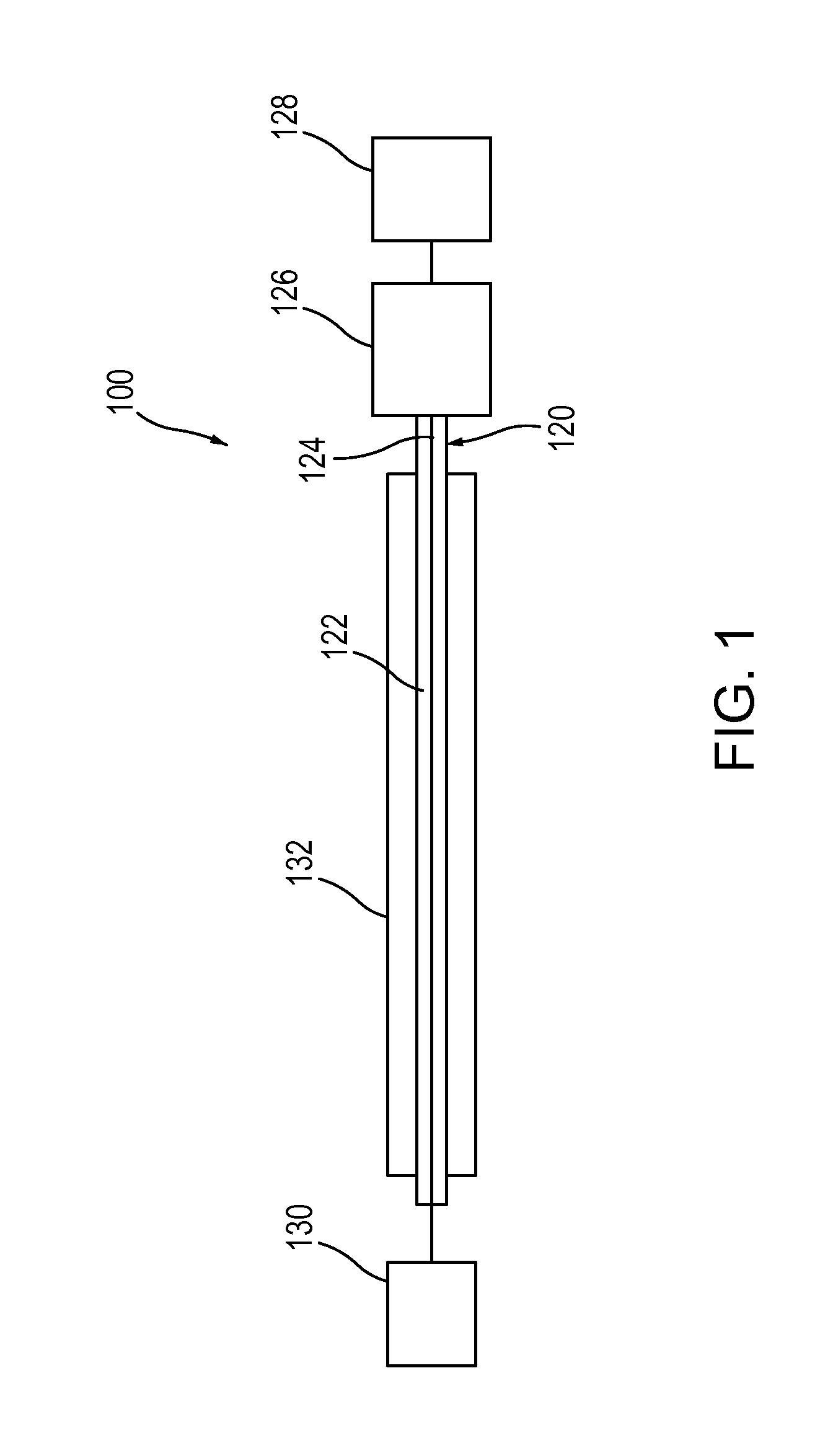Devices and methods for vascular recanalization
a technology of vascular recanalization and devices, applied in the field of medical devices, can solve the problems of cumbersome filtering, difficult deployment, device drifting within the vessel, etc., and achieve the effect of increasing blood flow through the blood vessel
- Summary
- Abstract
- Description
- Claims
- Application Information
AI Technical Summary
Benefits of technology
Problems solved by technology
Method used
Image
Examples
Embodiment Construction
[0041]Medical devices and methods of treatment are described herein to treat patients experiencing a blockage in a circulatory blood vessel and the effects of that event, including ischemic stroke and / or heart attack. In some embodiments, a delivery apparatus, such as for example, a delivery catheter, is included for delivering a medical device to a treatment site within a patient. The medical devices and methods of treatment described herein can reduce ischemic events while recanalizing a vessel. In some embodiments, methods for retrieving and removing an obstruction responsible for a blockage before the vessel is re-opened are described and, in some cases, providing oxygenated blood or superoxygenated blood distal of the blockage while the obstruction is being cleared.
[0042]Various embodiments of a vascular recanalization device for recanalizing a blocked vessel are described herein. The vascular recanalization device (also referred to herein as “recanalization device” or “medical...
PUM
 Login to View More
Login to View More Abstract
Description
Claims
Application Information
 Login to View More
Login to View More - Generate Ideas
- Intellectual Property
- Life Sciences
- Materials
- Tech Scout
- Unparalleled Data Quality
- Higher Quality Content
- 60% Fewer Hallucinations
Browse by: Latest US Patents, China's latest patents, Technical Efficacy Thesaurus, Application Domain, Technology Topic, Popular Technical Reports.
© 2025 PatSnap. All rights reserved.Legal|Privacy policy|Modern Slavery Act Transparency Statement|Sitemap|About US| Contact US: help@patsnap.com



